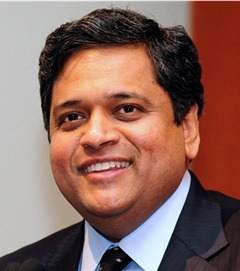
Physicians in the USA are using, for the first time, coil embolisation to treat severe ventricular tachycardias. The intervention is normally employed for treating brain aneurysms. The first cases were performed by a multidisciplinary team-including electrophysiologists, interventional cardiologists and neurointerventionalists-from the Veterans Affairs Medical Center, University of Minnesota, Minneapolis, USA, and University of California (UCLA) Cardiac Arrhythmia Center, UCLA Health System, Los Angeles, USA.
In the case report, featured in the cover of the February issue of Heart Rhythm, Venkatakrishna N Tholakanahalli, Department of Cardiology, Veterans Affairs Medical Center, University of Minnesota, and others described two cases of patients who suffered from intraseptal ventricular tachycardia who were treated with intracoronary wire mapping and subsequent coil embolisation. In the report, Tholakanahalli et al concluded: “Septal perforator artery coil embolisation is a feasible option to treat intraseptal ventricular tachycardia otherwise not amenable via endocardial or epicardial approach. This technique should be reserved for patients with lifestyle-limiting arrhythmias with no alternative conventional treatment options.” The researchers acknowledged the importance to undertake further studies to determine the safety and efficacy of this approach.
Cardiac Rhythm News spoke to Kalyanam Shivkumar, senior author of the report (director of the UCLA Cardiac Arrhythmia Center and professor of Medicine and Radiological Sciences at the David Geffen School of Medicine at UCLA) in more detail about the technique, its benefits and most suitable patients for this procedure:
Could you explain how this technique works?
This technique works by placing small wires (coils) inside blood vessels so that blood supply to that region of the heart is secluded and this destroys the muscle tissue that is responsible for the abnormal rhythm.
What prompted the decision to implement a technique normally used to treat brain aneurysms?
We decided to use this technique simply because of two observations: (i) electrograms from wires placed in these regions can provide data that helps target an area for ablation and (ii) we found coil embolisation is already being effectively used to occlude small blood vessels in the brain. We thought we could adapt this technique to fixing arrhythmias.
What are the benefits of using coil embolisation to treat ventricular tachycardia?
There is an increasing recognition that arrhythmias originating from deep within the muscle wall are an important problem that has to be treated. These patients cannot be treated by any other available technology and this may be the only option that we can offer for some of these difficult cases.
What kind of patients are more suitable for this technique?
Patients who have an abnormal rhythm that originates from within the muscle wall where there is actually a blood vessel into which we can place a wire would be suitable candidates for this technique. Further, we can obtain an electrical recording from the region of the heart and also place these coils that can occlude that blood vessel. In the past, patients have undergone alcohol infusion which has a lot of problems associated with it-eg. atrioventricular block and ethanol-induced injury caused by balloon rupture-whereas this technique can be performed without the disadvantages of alcohol infusion.
Why is it important to have a multidisciplinary team for this type of procedure?
The participation of interventional cardiologists is very important, they deal with interventions on the coronary arteries, they are very up-to-date with the technologies that are available for that type of work and they provide invaluable advice. The neurointerventionalists were the pioneers using this technique; therefore they were a very obvious partner. This type of team work is not an uncommon occurrence at UCLA where diverse specialties join together under one umbrella to fix a problem.
How the patients treated are doing so far?
They are doing very well. In fact, one of these patients has come off of the medications and we have also done a few additional cases since then.
Are you aware of any other cardiac diseases treated with coil embolisation?
Coil embolisation has been used for ablating the septal muscle for patients with hypertrophic cardiomyopathy and of course it is used for atrioventricular fistulas and vascular anomalies.












